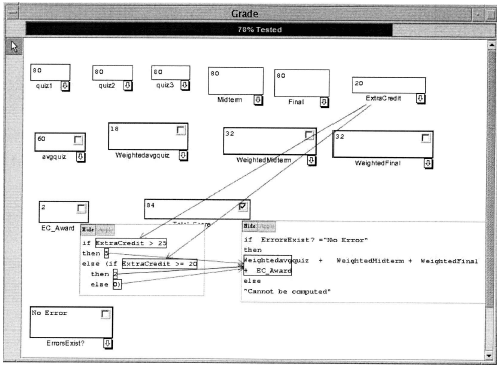Authors
Shreenivasarao Prabhakararao
Abstract
End-user programmers are writing an unprecedented number of programs, due in large part to the significant effort put forth to bring programming power to end users. Unfortunately, this effort has not been supplemented by a comparable effort to increase the correctness of these often faulty programs.
To address this need, we have been working towards bringing fault localization techniques to end users. In order to understand how end users are affected by and interact with such techniques, we conducted a think-aloud study, examining the interactive, human-centric ties between end-user debugging and a fault localization technique for the spreadsheet paradigm.
Our results provide insights into the contributions such techniques can make to an interactive end-user debugging process.
Sample

This figure shows a spreadsheet after the user validates the TotalScore cell for the current set of inputs.
Notice that the question mark in the TotalScore cell now becomes a checkmark. The cells EC_Award and TotalScore are still to be tested.
The %testedness indicator has risen to 78%. Although the user may not realize it, behind the scenes "testedness" is computed using a dataflow test adequacy criterion.
Publication
2004, Master's thesis, Oregon State University, June
Full article
Strategies and behaviors of end-user programmers with interactive fault localization
